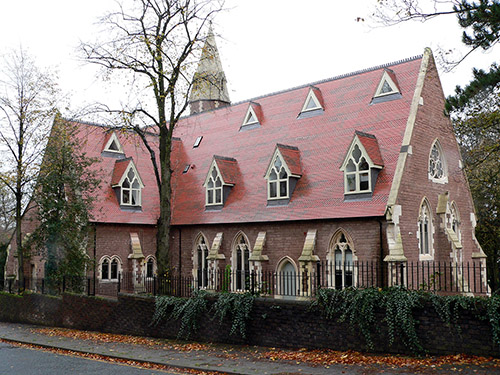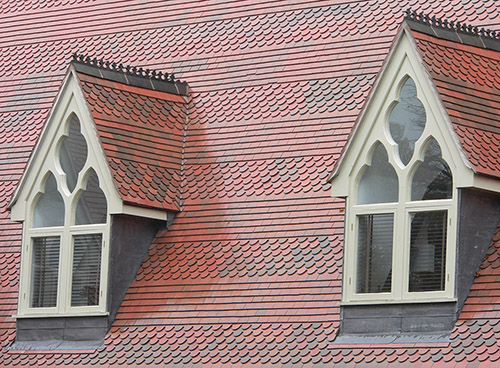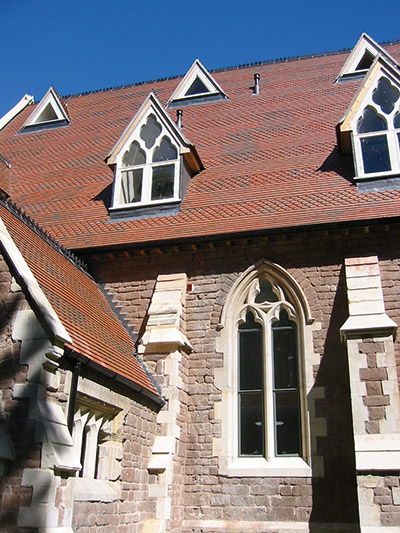New roof tiles allow new life for former church
 A Grade Two*-Listed neo-Gothic former church in Birmingham has proved to be a shining example of how sensitive restoration and conversion can allow treasured buildings to be brought back into use.St James’s Church in Edgbaston was built in 1852 to a design by the eminent Victorian architect SS Teulon.
A Grade Two*-Listed neo-Gothic former church in Birmingham has proved to be a shining example of how sensitive restoration and conversion can allow treasured buildings to be brought back into use.St James’s Church in Edgbaston was built in 1852 to a design by the eminent Victorian architect SS Teulon.
It had been unused since 1975, becoming derelict and subject to vandalism, theft and decay.
It had been regarded as uneconomical to develop as a residential building until the recent considerable rise in property values. However, in the early years of this decade it was reconfigured into 12 luxury apartments by Gloucestershire-based developer Astley Towne. The development has been welcomed by both the Victorian Society and Birmingham City Council’s planners and conservation officer, all of whom were delighted to see it restored for a new purpose.
 The design was by DLG Architects. Their design principle was to regard the original building as totally empty volume and to erect a new independent frame inside, so that the walls carry no additional load. In theory the new internal work could be removed by future generations and the building restored to its original state.
The design was by DLG Architects. Their design principle was to regard the original building as totally empty volume and to erect a new independent frame inside, so that the walls carry no additional load. In theory the new internal work could be removed by future generations and the building restored to its original state.
The challenge was to retain and restore the original features of the church, while providing a series of modern spaces in a contemporary style that complement the original elements.
The original specification for the roof was to strip and reuse as many tiles as possible and make up with second-hand. However, the impossibility of finding matching second-hand ornamental tiles and fittings in such quantities was evident to the contractor Lewis Roofing. They contacted traditional clay tile manufacturer Dreadnought to investigate whether new tile alternatives could be produced.
 The solution
The solution
Victorian plain tiles were generally smooth-faced and of natural burnt clay colours. Dreadnought tiles met that description fully and were accepted as representative of the original material. The chosen tiles were Dreadnought’s Brown Antique smooth-faced plain clay tiles and Brown Antique ornamentals.
The resulting conversion attracted considerable interest in the press both nationally and locally – not merely for its architectural and technical merit but because the problem of maintenance of ecclesiastical architecture becomes ever bigger as society becomes increasingly secular. It was also Highly Commended in the Best Ecclesiastical Redevelopment category of the Clay Roof Tile Council’s awards.
The scheme represents a sensible solution and the conservation bodies involved are rightly pleased with the result.
For further information visit the website www.dreadnought-tiles.co.uk















